John Hurrell – 14 October, 2016
Made with thin, low sheen binder and powdered pigments, vigorously applied with various brooms and house-painting brushes, and largely constructed flat on the floor, these whopper Ab Ex works lure you into looking through loose tangles of dark tonally-matched chroma (of similar tertiary hues). You have to stand close to appreciate the richness of Garcia-Alvarez's nuanced colour juxtapositions, and his expansive sense of bodily involvement within the direction of each large brushmark; their feathery, sprawling, filamenty, hairy traces.
Auckland
Alberto Garcia-Alvarez
4 Large Paintings
27 September - 22 October 2016
Four very large paintings by Alberto Garcia-Alvarez dominate the Melville Gallery - its front space - and in the director’s office out the back are a dozen much smaller works, float-mounted in trays. The latter are fascinating as experimental investigations, but the main gig is by the entrance.
The four big canvases (a couple reach up to the top edge of the walls) deserve a substantial audience. They are unusual in that they remind us of our bodies’ responses to the physical properties of art, an occurrence that is immediate and emotional, affecting us long before analytical (or ideational and referential) preoccupations kick in.
Made with thin, low sheen binder and powdered pigments, vigorously applied with various brooms and house-painting brushes, and largely constructed flat on the floor, these whopper Ab Ex works lure you into looking through loose tangles of dark tonally-matched chroma (of similar tertiary hues). They are sort of Clyfford Still meets Joan Mitchell, but far looser and more sweeping, with runny wet (non tube, non-easel brush) splashed-around paint. You have to stand close to appreciate the richness of Garcia-Alvarez’s nuanced colour juxtapositions, and his expansive sense of bodily involvement within the direction of each large brushmark; their caressing feathery, sprawling, filamenty, hairy traces.
Then there is their function as surrogate architecture, as replacement perpendicular walls. These works spatially connect with the viewer as parts of - or extensions of - the room they are standing in. The chromatically isolated, ragged edged rectangles positioned on the bottom left or right corners of each stretcher, beckon. They connect with a more traditional form of manual paint application - are denser and more intricate and vibrantly crisp than the large inverted L-forms they are tucked into - and could be doors, trapdoors, windows, sections of archway, dumb waiters, skylights or corridors. Sometimes skeletal and delineated with Paintstik, such advancing planar slabs or receding tunnels call for attention, with different proportions discreetly tugging at your head or torso. Or the oblongs extending outwards. Body and mind responding together.
John Hurrell
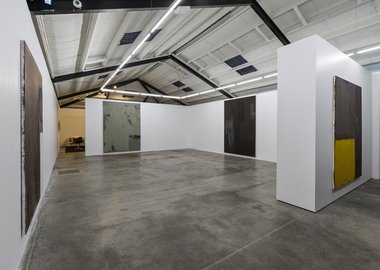




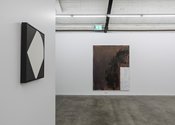
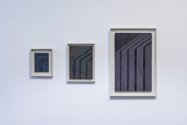

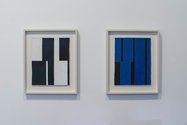

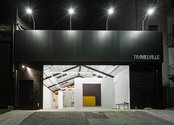
 Two Rooms presents a program of residencies and projects
Two Rooms presents a program of residencies and projects Advertising in this column
Advertising in this column



This Discussion has 0 comments.
Comment
Participate
Register to Participate.
Sign in
Sign in to an existing account.